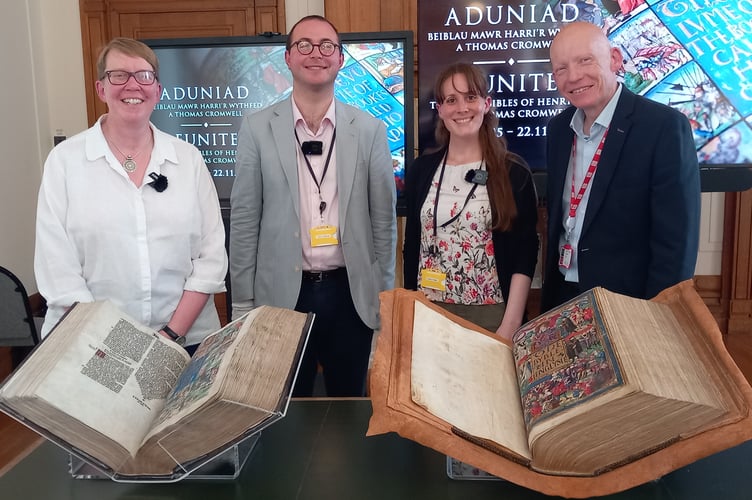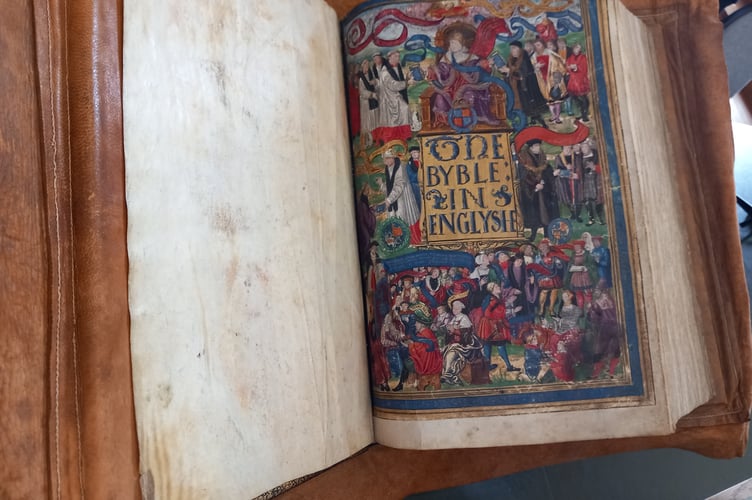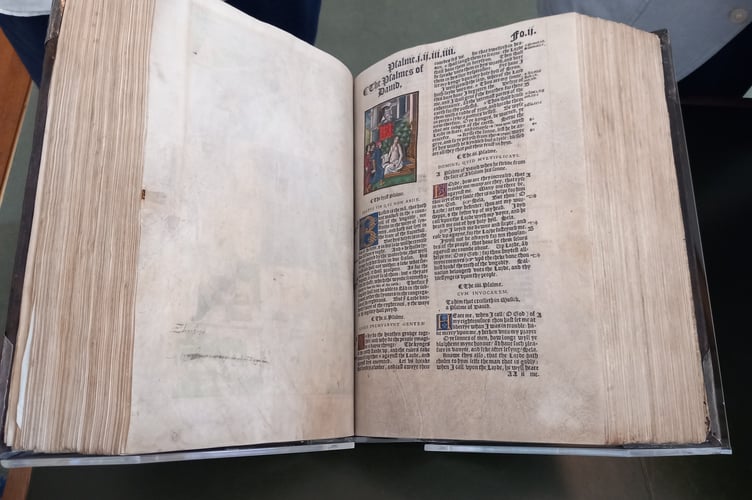The Great Bibles of Henry VIII and Thomas Cromwell have been reunited for the first time in nearly 500 years, and last week I received an invitation to see them.
The items are on display to the public now, and history lovers will be fascinated by them.
The Great Bible was a key part of the English Reformation. It was the first Bible meant to be read in every church in England and Wales, giving people more access to the Bible than ever before. Its printing was supported by King Henry VIII’s powerful advisor, Thomas Cromwell, a strong supporter of religious reform.
Some of the unknown history of the books have recently been revealed using innovative technologies by the Hidden in Plain Sight project, funded by the Arts and Humanities Research Council, shedding new light on the books, and leading to new discoveries about their creation and modifications. Project experts Dr Suzanne Paul, Dr Flavia Fiorillo and Dr Harry Spillane shared some of these insights at the preview event.

Dr Suzanne Paul is Keeper of Rare Books and Early Manuscripts at Cambridge University Library. A medievalist by training, she is passionate about making medieval books accessible. She is particularly interested in the application of digital and scientific approaches to the study and curation of manuscripts. She has collaborated on several large-scale digitisation and cataloguing projects and innovative approaches to sharing and teaching about manuscripts.
Prof. Eyal Poleg, professor of Material History at Queen Mary University of London, was unable to attend the preview. His work explores the intersection of objects and faith in premodern societies. He has published extensively on the medieval and early modern Bible in England, and his latest book is A Material History of the Bible, England 1200-1553.
He currently leads Hidden in Plain Sight: Historical And Scientific Analysis Of Premodern Sacred Books, briingng together historians, scientists, curators and conservators in developing new technologies for studying historical books and objects.
Dr Flavia Fiorillo is a Research Associate in Heritage Science at Cambridge University Library and the Fitzwilliam Museum. After receiving her PhD in Cultural Heritage Studies from the University of Bologna, she moved to Cambridge in 2020 to research manuscripts and books through non-invasive analysis.

Dr Harry Spillane is the 2024-25 Munby Fellow in Bibliography at Cambridge University Library and a Research Fellow at Darwin College. Prior to taking up the fellowship in 2024, Harry combined a Visiting Fellowship at the Bodleian Library, Oxford, with teaching roles at Cambridge colleges, most recently Newnham (as Director of Studies) and Downing (as Bye-Fellow). He completed his PhD in History at Cambridge in 2022 and had previously taken the MPhil in Early Modern History (2017-18). Harry had previously received a First-Class BA (Hons) in History from the University of Oxford (2014-17). He received the Cambridge University Library Gordon Duff Prize for Bibliography in 2021.
See King Henry VIII and Thomas Cromwell’s personal copies of the Great Bible, one held by the National Library and the other by St. John's College, Cambridge, on display in Aberystwyth.



.jpeg?width=209&height=140&crop=209:145,smart&quality=75)

Comments
This article has no comments yet. Be the first to leave a comment.